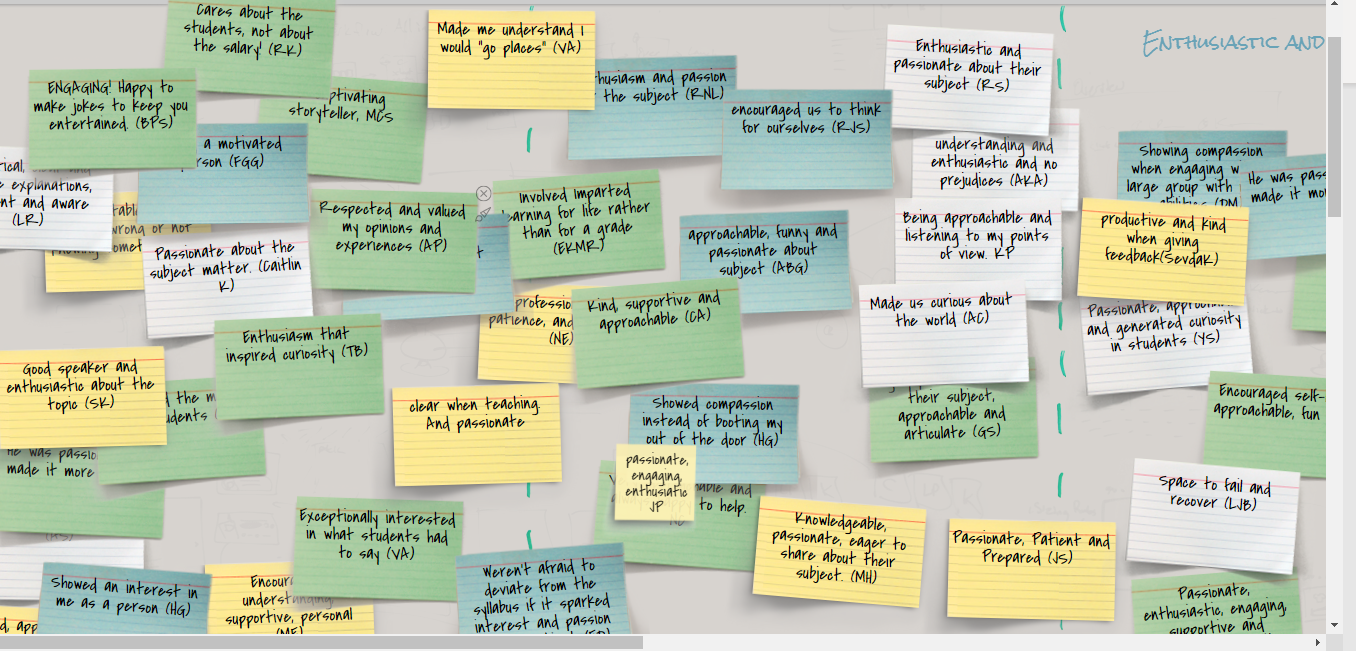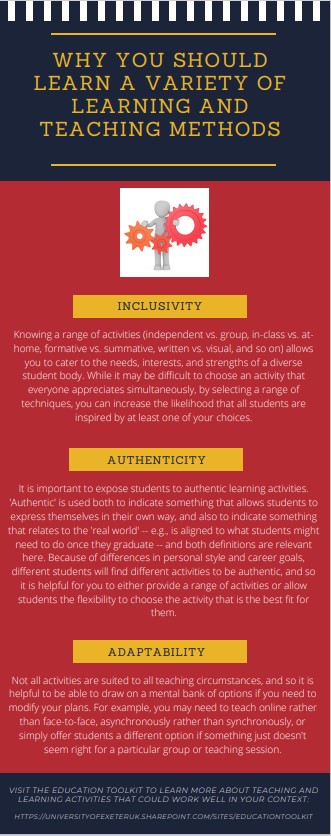Moving LTHE from face to face to online delivery at speed
Giorgia Pigato, the University of Exeter, explains how redesigning a face to face course captured the benefits to be gained from flexible delivery.
Author: Giorgia Pigato
1.What exactly was the shift in culture and/or organisational practice that you wish to highlight?
The Academic Development team design and deliver the Learning and Teaching in Higher Education (LTHE) course at the University of Exeter. The course is aimed at postgraduates who intend to work as teaching assistants, educators on research-only contracts, and professional services staff who facilitate learning. It is mandatory for postgraduates who teach (PTAs). Prior to March 2020 LTHE was delivered face-to-face in two separate campuses. Typically, around 300 students per academic year engaged with the course.
Because of the pandemic, in 2020 we had to re-design the entire course to be online by early September.
We aimed to:
- Meet the specific needs of educators new to teaching in HE.
- Give participants an understanding of how to provide an active, stimulating, student- centred learning experience.
- Ensure that participants had opportunities to reflect.
- Do all the above using a learner-centred approach.
Having a sense of belonging, relationship building, and trust strongly influence learner emotions (McGill, Beetham and Gray, 2016) therefore we wanted to foster a sense of community, support, and compassion.

2. What did ‘working well’ look like?
Lack of time and resources affected our choices and a project that would usually have taken at least a year was put together in a few months. We needed to make sure that we did not try to merely replicate face-to-face teaching models but took advantage of the benefits that flexible delivery could offer. A specific challenge for this type of course is also that, although attending LTHE is a great developmental offering that opens work opportunities, it is rarely a priority for participants whose focus is either their PhD or full-time employment. We redesigned the course following the university Learning Model, especially created for the move online and inspired by ABC Learning Design (ABC-ld.org). We aimed at offering maximum flexibility and ease of access to all and we decided that:
- Students could enrol any time and could proceed at their own pace.
- There would be opportunities to get to know each other and collaborate. For example, by adopting icebreakers and tools such as a forum, Menti, Padlet, Yammer and Notebook.
- The tutors recorded short, informal videos to make the approach more personal and welcoming.
- We also added regular short quizzes so that students could check their learning, and we could keep track of engagement.


It was clear very soon that the main gain was how inclusive online delivery was. We believe this is the reason behind increased enrolment. Participation is very high; last year we had 545 registrations compared to 300 in a regular year. The end of course feedback was also very positive: 4.03 out of 5 which is in line with previous years. The high-level content certainly contributed to the positive feedback because it was often cited by students.
Participants noted that they had signed up for the course previously but then had been unable to attend or finish it because of other commitments. Most commented that picking up the course anytime they wanted was invaluable. And some said they thought the flexibility was great, but they missed being with people and were afraid of becoming too accustomed to work on their own, with one comment being: ‘I guess we want to have the cake and eat it!’
For face-to-face sessions, we used large amounts of hand-outs and physical resources that could then be forgotten in cupboards for months, not to mention how impractical it was to carry these across campus. Participants have access to the course on the virtual platforms for years; we want them to go back to the resources whenever they need.
3. How could this practice be spread?
We cannot stress enough how much this category of students appreciated the flexibility afforded by this format and therefore we will not go back to total in-person delivery. This experience has given us the chance to reflect on flexible practice, revisit ways that learning communities can support each other, and reconsider what teaching face-to-face means as well as our role as developers and tutors. We recommend this reflection to others because, as developers, we might think, deep down, that face-to-face delivery always offers something more. For similar contexts, structure is also essential to participants completing the course. Make clear how they could engage in learning for example by helping participants setting clear goals and making and monitoring plans with digital tools. We have created a list of essential and possible changes and we will follow these criteria based on capacity. We aim to create more opportunities for meaningful dialogue and feedback, and be proactive in seeking communication, utilising live meetings and other check in opportunities. Therefore, definitely online delivery but also with other opportunities. There wasn’t much more we could have done differently because the situation was extraordinary at the time. Going forward developers need to acknowledge that CPD can and will have many forms, far from traditional face to face delivery, and we need to work with educators to design and deliver what’s really needed. Our flexibility is also key and we need to be able to work with what comes our way, even when is unexpected. Our team is working to include all voices by engaging students from different backgrounds, revisiting the course’s layout in a more accessible way and decolonizing reading lists and sources.
References
ABC Learning Design, Sprint design your courses and programs in just 90 minutes. Available at: https://abc-ld.org (Accessed: September 10, 2021)
McGill, Lou, Beetham, Helen and Gray, Tim. (2016) What makes a successful online learner? Findings of the Digital Student Online learners’ expectations and experiences of the digital environment. Available at: https://www.qub.ac.uk/directorates/media/Media,992744,smxx.pdf (Accessed: September 30, 2021)
Join the conversation at the Digital Culture Forum

